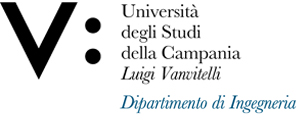Salvatore D'ANGELO
Insegnamento di ADVANCED SOFTWARE ENGINEERING AND MACHINE LEARNING
Corso di laurea magistrale in INGEGNERIA INFORMATICA
SSD: ING-INF/05
CFU: 12,00
ORE PER UNITÀ DIDATTICA: 96,00
Periodo di Erogazione: Secondo Semestre
Italiano
| Lingua di insegnamento | ITALIANO |
| Contenuti | Approfondimento su argomenti di Ingegneria del Software, in particolare metodologie Agili. Metodologie di sviluppo a Microservizi e uso dei Container. |
| Testi di riferimento | Design Patterns, Gamma, Helm, Johnson, Vlissides; Design Patterns in Java; Pattern Oriented Software Architecture; UML and the Unified Process, Arlow Neustadt; Hands-On Machine Learning with Scikit-Learn, Keras, and Tensorflow: Concepts, Tools, and Techniques to Build Intelligent Systems, Aurélien Géron |
| Obiettivi formativi | Conoscenza approfondita delle metodologie agili di Ingegneria del Software, capacità di sviluppare in maniera critica progetti software complessi. |
| Prerequisiti | Conoscenza di base del linguaggio Python |
| Metodologie didattiche | Didattica frontale con presentazione di argomenti teorici |
| Metodi di valutazione | Prove Intracorso o equivalente prova scritta, colloquio orale. |
| Altre informazioni | No |
| Programma del corso | Modelli di Processo per lo Sviluppo del Software. |
English
| Teaching language | Italian |
| Contents | In-depth study on Software Engineering topics, in particular Agile methodologies. Microservices development methodologies and use of containers. |
| Textbook and course materials | Design Patterns, Gamma, Helm, Johnson, Vlissides; Design Patterns in Java; Pattern Oriented Software Architecture; UML and the Unified Process, Arlow Neustadt; Hands-On Machine Learning with Scikit-Learn, Keras, and Tensorflow: Concepts, Tools, and Techniques to Build Intelligent Systems, Aurélien Géron |
| Course objectives | In-depth knowledge of agile Software Engineering methodologies, ability to critically develop complex software projects. |
| Prerequisites | Basic knowledge of the Python language |
| Teaching methods | Frontal teaching with presentation of theoretical topics |
| Evaluation methods | Written and oral exam. |
| Other information | No |
| Course Syllabus | Process Models for Software Development. |








